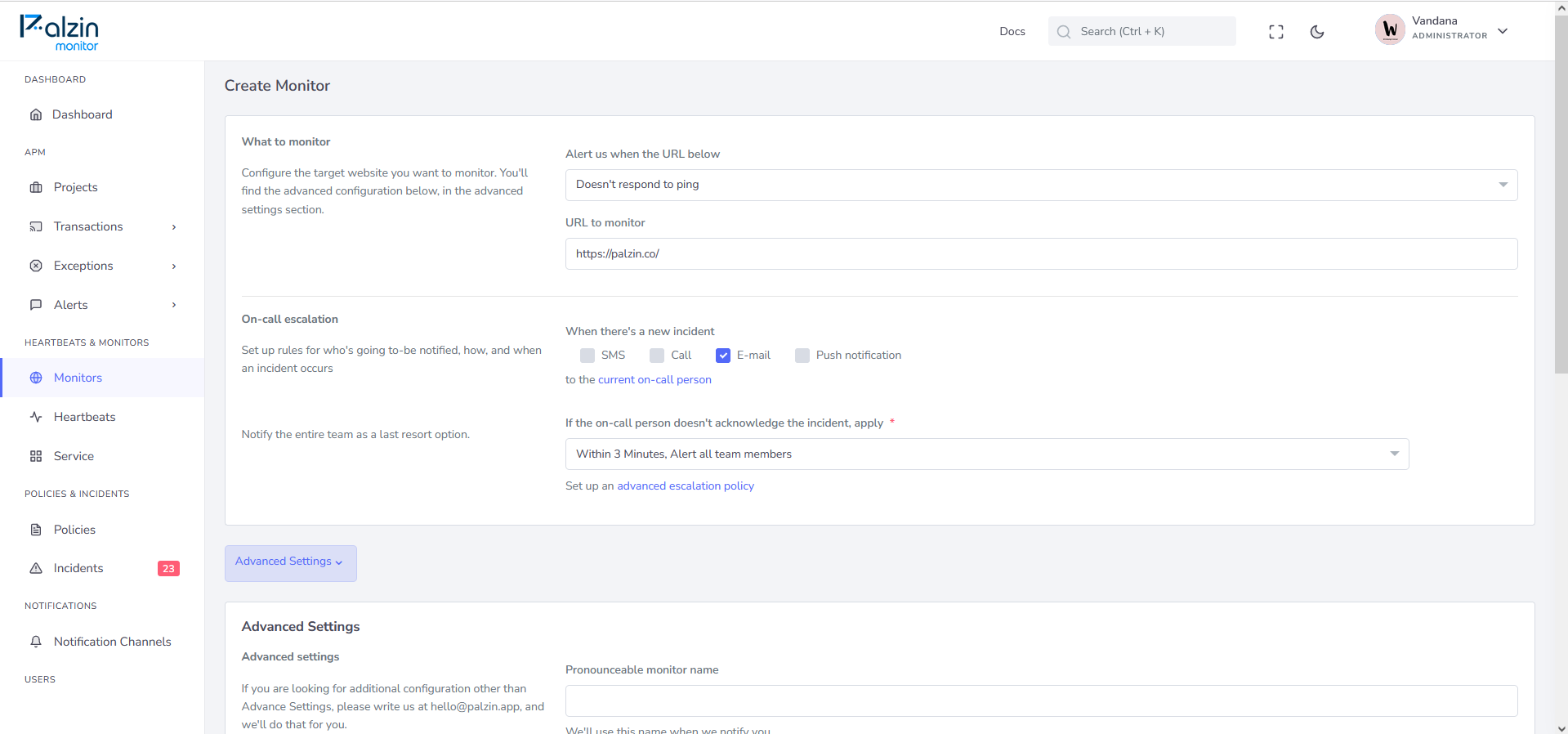Ping monitors work the same way the ping command does on a computer. If the host doesn't respond to the ICMP packets sent by ping, an incident is created, and the current on-call person or the entire team is alerted.
If this is your first time setting up API monitoring, we recommend starting with our Introduction to ping monitoring.

Now that we have defined what the monitor will check, we need to define what happens when the check fails. Specifically, we need to set up who will get alerted and how. The alerting options we can choose from are:
Phone call — This is ideal for any vital business pages that need to be available 24/7. Phone calls are fully automated.
SMS — This is ideal for less critical alerts, such as low-traffic blog pages, or for use in combination with other alerting methods.
We recommend saving the Palzin Monitor phone numbers, so you know who is calling or texting you right away.
We recommend whitelisting the @palzin.app domain in your email client, so that incident alerts are marked as important. This will also prevent any important alerts from going into folders other than the main inbox.
It takes less than a minutes to setup your first monitoring.